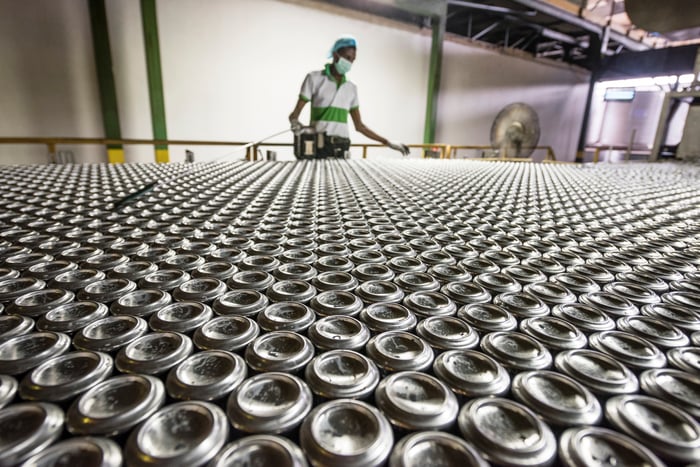What happened
Shares of aluminum giant Alcoa (AA 3.39%) are racing higher and are up 9.8% so far this week, as of early Friday. It's a stunning recovery after the stock's steep 16.7% decline just over a week ago. What's with all the volatility?
So what
As a commodity stock, Alcoa shares ebb and flow with commodity prices. Prices of aluminum have fluctuated dramatically in recent days after a heady rally this year, and so has the stock price.
For example, prices in Shanghai hit 13-year highs on Aug. 17 as China -- the world's largest aluminum producer -- curbed production to cut greenhouse gas emissions. Barely two days later, China reported slower than-expected industrial production numbers for June, triggering fears of a meltdown in the global metals and mining market. Prices of key base metals like copper and iron ore tanked, pulling aluminum prices along.
Chances are, Alcoa shares may not have bounced back so fast this week had it not been for a freak fire.

Image source: Getty Images.
On Aug. 22, a major fire broke out at the Jamalco refinery in Jamaica, forcing it to shut down. The incident sent prices of alumina soaring to highs not seen in six months. Alumina is used to produce aluminum.
You may ask: Why does fire at one refinery influence alumina prices so much, and how does it affect Alcoa?
In reality, it isn't about the Jamalco's refinery's size -- it can produce around 1.4 million metric tons of alumina annually, which is only a fraction of the 134.4 million metric tons of alumina produced globally in the past 12 months.
Yet there's already a crunch in supply of the aluminum feedstock, partly because of the COVID-19 pandemic disruptions, so any further drop in production -- whether it's because of curbs in China or a fire at any refinery in the world -- is enough to spook the metal and mining markets.
Alcoa, in particular, stands to benefit the most from higher prices of alumina -- It is the world's largest alumina producer, after all, with a capacity to produce 17 million metric tons a year. Although Alcoa uses much of its produce in its own aluminum smelters, it sells at least half of it externally.
Now what
Alcoa ramped up alumina production to near-record levels last quarter, and I suspect it's continuing to do so to fully exploit the strength in demand and prices. If alumina prices can sustain momentum, Alcoa could deliver yet another record quarter in coming months, which should drive its stock price higher. In any case, I reiterate my views from last week that Alcoa is on solid footing, and it's still too early to call it an end for the commodities supercycle.





